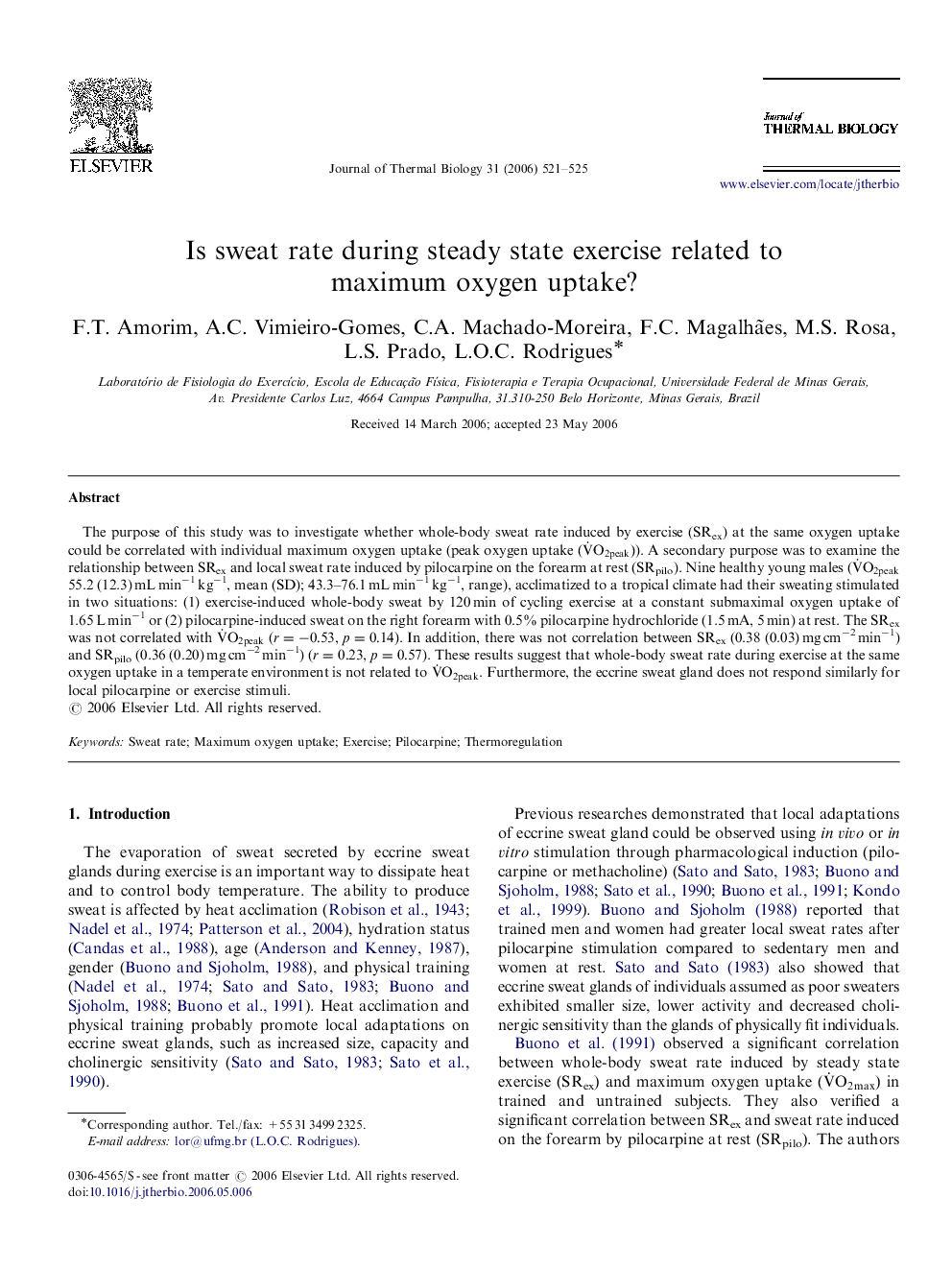| Article ID | Journal | Published Year | Pages | File Type |
|---|---|---|---|---|
| 2843833 | Journal of Thermal Biology | 2006 | 5 Pages |
The purpose of this study was to investigate whether whole-body sweat rate induced by exercise (SRex) at the same oxygen uptake could be correlated with individual maximum oxygen uptake (peak oxygen uptake (V˙O2peak)). A secondary purpose was to examine the relationship between SRex and local sweat rate induced by pilocarpine on the forearm at rest (SRpilo). Nine healthy young males (V˙O2peak 55.2 (12.3) mL min−1 kg−1, mean (SD); 43.3–76.1 mL min−1 kg−1, range), acclimatized to a tropical climate had their sweating stimulated in two situations: (1) exercise-induced whole-body sweat by 120 min of cycling exercise at a constant submaximal oxygen uptake of 1.65 L min−1 or (2) pilocarpine-induced sweat on the right forearm with 0.5% pilocarpine hydrochloride (1.5 mA, 5 min) at rest. The SRex was not correlated with V˙O2peak (r=-0.53r=-0.53, p=0.14p=0.14). In addition, there was not correlation between SRex (0.38 (0.03) mg cm−2 min−1) and SRpilo (0.36 (0.20) mg cm−2 min−1) (r=0.23r=0.23, p=0.57p=0.57). These results suggest that whole-body sweat rate during exercise at the same oxygen uptake in a temperate environment is not related to V˙O2peak. Furthermore, the eccrine sweat gland does not respond similarly for local pilocarpine or exercise stimuli.
